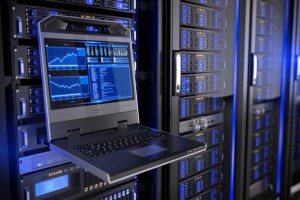Event Details
By the end of the training program participants will be able to engage the following:
- Installing the Linux operating system and configuring peripherals
- Performing and modifying startup and shutdown processes
- Configuring and maintaining basic networking services
- Creating and maintaining system users and groups
- Understanding and administering file permissions on directories and regular files
- Planning and creating disk partitions and file systems
- Performing maintenance on file systems
- Identifying and managing Linux processes
- Performing backups and restoration of files
- Working with system log files
- Troubleshooting system problems
- Analyzing and taking measures to increase system performance
- Configuring file sharing with NFS
- Configuring Samba for file sharing with the Windows clients
- Setting up a basic Web server
- Implementing basic security measures
COURSE CONTENT
System Administration Overview
- UNIX, Linux and Open Source
- Duties of the System Administrator
- Superusers and the Root Login
- Sharing Superuser Privileges with Others (su and sudo Commands)
- TCP/IP Networking Fundamentals
Installation and Configuration
- Planning: Hardware and Software Considerations
- Site Planning
- Installation Methods and Types
- Installation Classes
- Partitions
- Logical Volume Manager - LVM
- File System Overview
- Swap Partition Considerations
- Other Partition Considerations
- The Linux Boot Loader: grub
- Software Package Selection
- Adding and Configuring Peripherals
- Printers
- Graphics Controllers
- Basic Networking Configuration
- Booting to Recovery Mode
Booting and Shutting Down Linux
- Boot Sequence
- The systemd Daemon
- The systemctl Command
- Targets vs. Run Levels
- Modifying a Target
- Service Unit Scripts
- Changing System States
- Booting into Rescue Mode
- Shutdown Commands
Managing Software and Devices
- Identifying Software Packages
- Using rpm to Manage Software
- Using yum to Manage Software
- Installing and Removing Software
- Identifying Devices
- Displaying Device and System Information (PCI, USB)
- Plug and Play Devices
- Device Configuration Tools
Managing Users and Groups
- Setting Policies
- User File Management
- The /etc/passwd file
- The /etc/shadow file
- The /etc/group file
- The /etc/gshadow file
- Adding Users
- Modifying User Accounts
- Deleting User Accounts
- Working with Groups
- Setting User Environments
- Login Configuration Files
- Configuring the NFS Server
- Configuring the NFS Client
- Exporting File Systems from the NFS Server to the NFS Client
TRAINING METHODOLOGY
The training methodology combines lectures, discussions, group exercises and illustrations. Participants will gain both theoretical and practical knowledge of the topics. The emphasis is on the practical application of the topics and as a result participant will go back to the workplace with both the ability and the confidence to apply the techniques learned to their duties.
This course is available in the following locations:
Nigeria - $3000
Ghana - $6500
Rwanda - $7500
UK - $8500
USA - $8500





